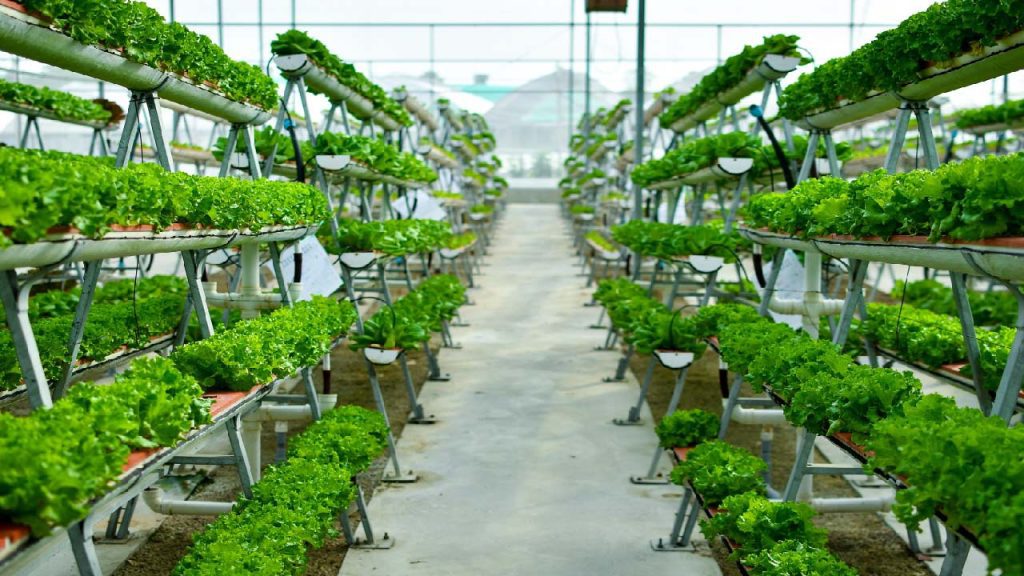Imagine walking into a farm that’s more like a skyscraper than a field. Instead of rows of crops stretching out as far as the eye can see, you see towering layers of plants growing upwards, towards the ceiling. Welcome to the world of vertical farming! Vertical farming is a way of growing plants in vertically stacked layers, often in an indoor environment. It’s like a big, green, three dimensional (3D) puzzle. This method of farming is becoming increasingly popular, and for good reason.
Why vertical farming?
Traditional farming methods can be limited by factors like weather, soil quality, and space. Vertical farming solves many of these problems. By growing plants indoors, farmers can control the temperature, humidity, and light levels, creating perfect conditions for growth. This means crops can be grown year-round, regardless of the weather outside. Vertical farming also uses much less water than traditional farming methods. This is especially important in areas where water is scarce, and when crops are grown in stacked layers, vertical farming can produce a lot more food in a smaller space. This makes it perfect for urban areas where space is limited.
How does it work?
Vertical farming uses a combination of technology and traditional farming methods. The basic setup includes:
- A growing medium, like soil or a soilless mix
- A nutrient-rich solution that is pumped through the system
- Light emitting diode (LED) grow lights that provide the perfect spectrum and intensity of light
- A climate control system that regulates temperature and humidity
Plants are grown in vertically-stacked layers, often in a hydroponic or aeroponic system. This means their roots are suspended in the air, and they receive nutrients through a mist or solution.

The future of food
Vertical farming is still a relatively new field, but it is growing fast. Many experts believe it could be a key part of the solution to feeding the world’s growing population. With vertical farming, we can produce more food in less space, using fewer resources. It’s a game-changer. So, next time you’re at the grocery store, take a closer look at where your food comes from. It might just be grown in a vertical farm, using cutting-edge technology to bring you fresh, delicious produce.
- Increased yield: Vertical farming can increase crop yields by up to 30 times, compared to traditional farming methods.
- Water conservation: Vertical farming uses significantly less water than traditional farming methods, making it an attractive option for water-scarce regions.
- Reduced land use: By growing crops vertically, farmers can produce more food in a smaller space, reducing the need for arable land.
- Improved crop quality: Vertical farming allows for precise control over growing conditions, resulting in higher-quality crops.
- Year-round production: Vertical farming enables farmers to produce crops year-round, regardless of weather conditions or season.
- Reduced chemical use: Vertical farming often employs hydroponic or aeroponic systems, which reduce the need for chemical pesticides and fertilizers.
- Increased profitability: Vertical farming can be more profitable than traditional farming methods due to increased yields, reduced water and land use, and improved crop quality.
How to start vertical farming for profits
- Research and planning
- Learn about different types of vertical farming systems (hydroponics and aeroponics).
- Determine which crops to grow (leafy greens, herbs and microgreens).
- Develop a business plan, including budget, marketing strategy, and sales projections
- Choose a growing system
- Select a vertical farming system that suits your budget, space, and crop selection.
- Consider factors such as automation, climate control, and nutrient delivery.
- Acquire necessary equipment
- Purchase or build grow towers, hydroponic or aeroponic systems, and climate control equipment
- Invest in LED grow lights, irrigation systems, and other necessary components
- Select a location
- Choose a location with suitable climate, access to water and electricity, and proximity to markets
- Consider using an indoor space, such as a warehouse or container, for better climate control
- Obtain necessary licenses and permits
- Check with local authorities to obtain necessary licenses and permits for vertical farming
- Ensure compliance with local regulations and zoning laws
- Start small and scale up
- Begin with a small-scale vertical farm to test and refine your systems
- Gradually scale up your operation as you gain experience and confidence
- Monitor and adapt
- Continuously monitor your vertical farm’s performance, adjusting systems and techniques, as needed
- Stay up-to-date with the latest research, technologies, and best practices in vertical farming.
By following these steps and considering the estimated costs and potential revenue, beginners can start a profitable vertical farming operation.

